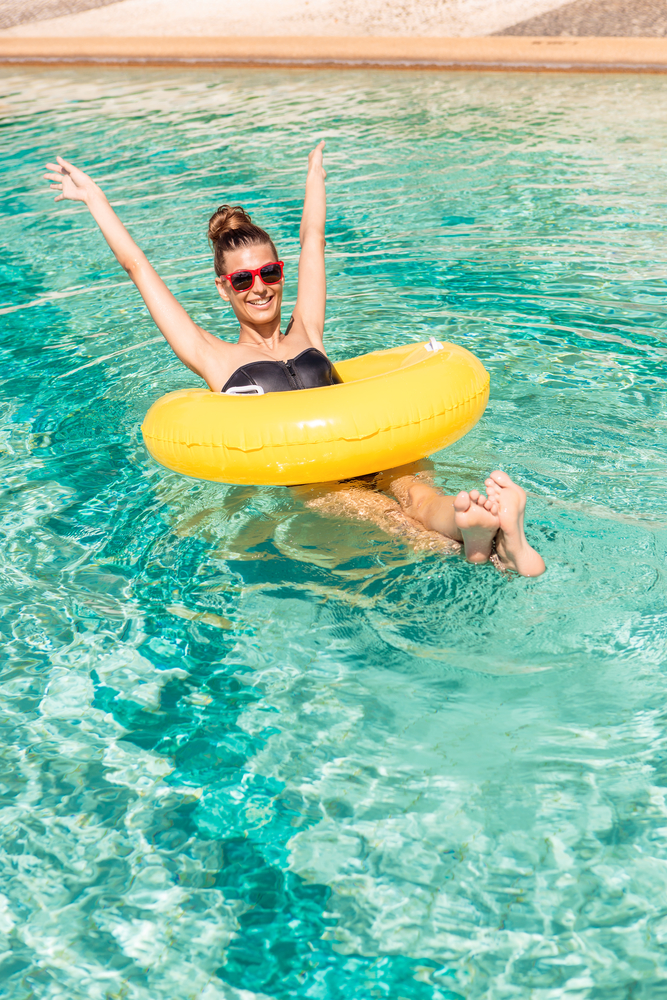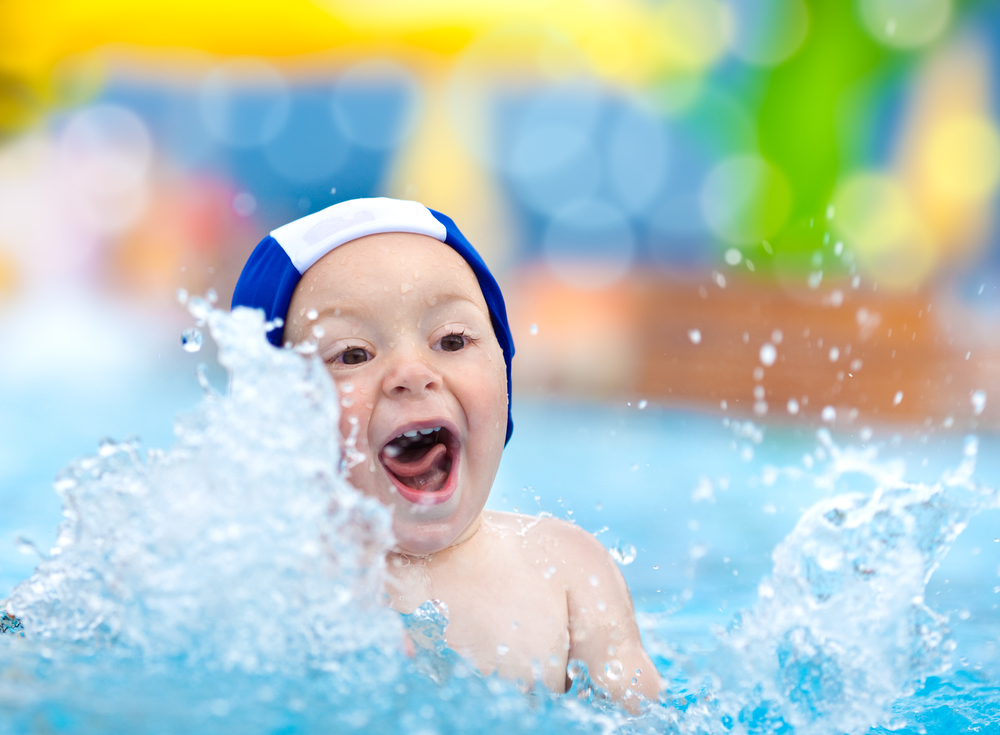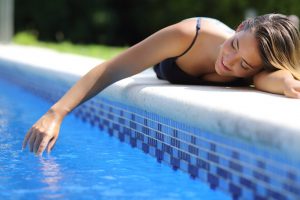The Centers for Disease Control and Prevention list accidental drowning as the leading cause of death among children between the ages of one- and four-years-old. Most of these happen in home swimming pools. This is startling and for any family who has a swimming pool in the backyard it’s enough to make you dash out the back door and check your pool to assure it has as many safety features in effect as humanly possible.
Layers of protection are advised by pool contractors. This way if a curious child breaches one pool safety measure there may be another to thwart his path toward the pool and toward potential injury or worse. Even with pool safety measures in place, it’s incumbent on the adults in the home to check and re-check all measures to assure the pool is inaccessible unless there are adults in attendance. Note: A safety measure to keep in mind is that you should never swim alone — even an adult can run into issues.
7 Pool Safety Tips For New & Long-Time Pool Owners
 Layers of safety technologies
Layers of safety technologies
A pool safety fence is not technically a piece of technology, but it is a layer of protection and one that the municipality in which you live will require you to have in place. A safety fence can be both decorative and protective.
Don’t choose a chain link fence design as those can be easily climbed by a curious child. Choose a fence that provides no footholds and is tall enough that even if a child climbs upon something, he cannot climb over it.
A pool safety fence is your first line of defense, but a pool safety alarm that sounds a loud, blaring noise if the surface of the water is broken is an ideal second layer. You can even have an alarm installed on the safety fence that will sound if the fence is opened. Install your fence with a self-latching feature on the off chance you forget to close it behind you. The fence needs to be taller than four feet and should be constructed of a material that won’t allow a child to wriggle through or under.
Pool safety alarms come in myriad types and you should choose the one that makes sense for your family and lifestyle. We often recommend those that float on the surface of the water as those will sound if the surface is broken. Infrared alarms will sound if the infrared beam is broken and this is also a type of alarm to research.
Finally, use a pool safety cover. These are sturdy enough to withstand up to forty pounds and will keep the child safe until you arrive on scene. With a pool safety cover, a pool safety fence and a pool safety alarm, your child should have a difficult time getting through, but if she does, this cover will keep her safe once you hear the alarm sound and can make it out to rescue her.
Keep it non-slip
Water and your pool deck just don’t mix especially if you have children running around the deck. Heck, even an adult can easily slip on wet wood or concrete decking material. A slip or fall accident is one of the most common cause of accidents around the pool. Construct the pool deck of a non-slip material or add non-skid materials to make it so.
Look at a material like Pebble-flex to make the deck non-skid. Pebble-flex also will not absorb the heat from the sun the way many pool deck material do and this will take away the fear of slipping and falling on a wet deck.
Pebble-flex is a bit on the pricey side, and an economical alternative is to have a coating applied to the deck to make it less slipper. There are spray-on coatings that add texture to the pool deck surface and make it more stable for walking even when wet.
 Check the ladder
Check the ladder
The ladder, if it’s your means of ingress and egress into the pool needs to be inspected to assure it’s sturdy and that it’s securely attached to the pool.
Another pool safety measure you may not have considered is the size of the ladder itself. The rungs or steps should be at least three inches wide – the wider the better. You’ve probably been on a pool ladder that has thin steps that cut into your foot and are too slippery and thin to make getting into and out of the pool a bit problematic.
The pool ladder handrail should be thin enough for a small child to grasp and the handrail should be non slip and as heat resistant as possible.
Swim lessons for everyone!
We want to preface this safety rule by saying, even if everyone knows how to swim that still doesn’t mean you can leave anyone alone in the pool — especially a child. Having swim lessons, even for the youngest children in the family, will give the child the skills he or she needs to minimize their drowning risk. Swim lessons also provide a healthy respect for the water and that can go a long way in keeping them safe.
No one swims alone
This should go without saying, but we are going to say it anyway, NO ONE should EVER swim ALONE! Whew. Yes, we felt the need to shout. Even if a child knows how to swim, she should never swim alone. Adults who have swum for years should never swim alone.
If you’re having a pool party, you need to designate someone to watch the children in the pool. That person needs to know how many children he or she is watching and keep track of them at all times. In fact, someone should be in the water and within touching distance of the children in the pool.
Chemical soup
Yes, you need to use pool chemicals to keep the water free of bacteria and safe for everyone using it (unless you have a natural pool or a salt water chlorination system) but they need to be tested and properly balanced.
The chemicals in the water keep it clean, but if it’s not properly balanced, bacteria can grow and cause rashes and other adverse health reactions. Chemicals that are too high can lead to red, itchy eyes and dry skin.
Get in the habit of testing the pool water chemistry levels to ensure the water is not only beautiful to look at, but healthy and safe for anyone who wants to use it.
 Preparation is key to safety
Preparation is key to safety
Let’s face it: Accidents happen. They happen when you’re least expecting it, but if you’re prepared for the possibility you can face it if it occurs. We do know that if you’re diligent and “rules of the pool” are followed, there is less of a chance that an accident will happen.
As mentioned:
- Learn to swim
- Learn CPR
- Have a first aid kit pool side
- Keep lifesaving equipment pool side — a telescoping hook, life vests, swim rings
- Have a phone poolside, with you, but for emergencies only not for playing games while others are in the pool.
- Be diligent in pool safety
Prevention
There is nothing better than prevention when it comes to swimming pool safety. Don’t let your loved ones become a statistic. Keep everyone safe and have fun every time you’re in the pool.
